Disclosure: This article contains affiliate links. We may earn a commission from purchases at no extra cost to you, which helps our travel content.
At 62, I've learned that the most authentic way to navigate unfamiliar waters is through local cuisine. After three decades analyzing municipal budgets in Riverside, I now find myself dissecting flavors instead of spreadsheets. My recent week-long exploration of Portoviejo and Ecuador's coastal region revealed a seafood scene as rich and complex as the ocean itself. Unlike the carefully planned budgets of my former life, coastal Ecuadorian cuisine follows nature's unpredictable rhythms—where yesterday's catch determines today's menu. This region, often overshadowed by Quito and the Galápagos, harbors culinary treasures that deserve their moment in the spotlight. Join me as I chart a course through the markets, roadside stands, and family-run restaurants that make Portoviejo a paradise for seafood lovers with mid-range budgets and adventurous palates.
Navigating Portoviejo's Mercado Municipal
Every meaningful journey needs a point of departure, and in Portoviejo, that's undoubtedly the Mercado Municipal. I arrived at 6:30 AM, when the market's pulse beats strongest and fishermen deliver their morning catch. The building itself isn't architecturally remarkable—a practical structure serving practical needs—but what happens inside transforms the ordinary into extraordinary.
The seafood section assaults the senses in the best possible way. Vendors arrange their offerings with the precision of accountants: red snappers lined up like figures in a ledger, shrimp sorted by size with mathematical accuracy, and octopus tentacles curled into perfect spirals. Unlike the sterile supermarkets back home, here you witness the full spectrum of marine life that sustains this coastal community.
I spent $15 for a local guide named Eduardo who walked me through the market for two hours, explaining the seasonal variations and introducing me to vendors whose families have occupied the same stalls for generations. Money well spent. Eduardo pointed out the corvina (sea bass) that would make the best ceviche and explained why the smaller camarones (shrimp) often pack more flavor than their larger counterparts.
The market isn't just a place to purchase ingredients—it's where culinary education begins. Several vendors offer samples, and I quickly learned to accept every offering with enthusiasm. The tiny cups of encebollado (fish stew) became my breakfast, each slightly different as vendors compete for the perfect balance of yuca, tuna, and pickled onions.
For serious cooks looking to recreate these flavors at home, I'd recommend picking up a mortar and pestle. The locals use these to crush fresh herbs and spices, releasing oils and aromas that electric grinders simply can't match.
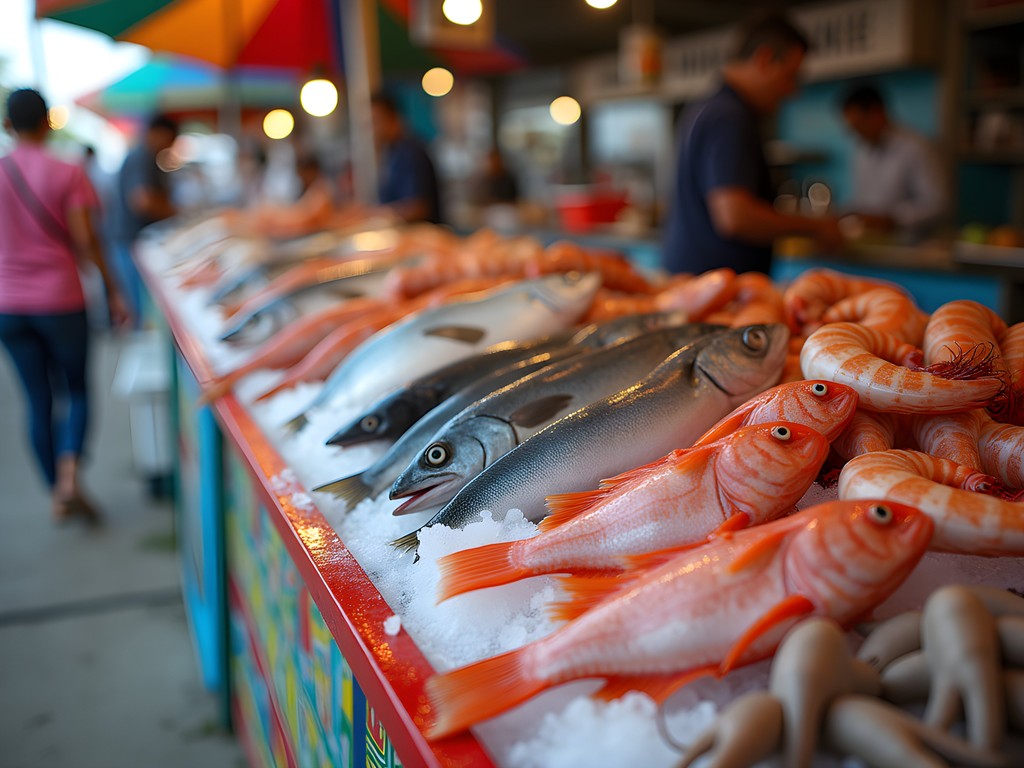
💡 Pro Tips
- Arrive between 6-7 AM for the freshest selection and to watch the market come alive
- Bring small bills and coins for easier transactions
- Ask vendors what they're cooking for their own families—that's often the best indicator of what's exceptional that day
The Art of Ecuadorian Ceviche
If coastal Ecuador were a financial portfolio, ceviche would be its blue-chip stock—reliable, valuable, and central to the local economy of flavors. Yet unlike the homogeneous nature of financial markets, ceviche here displays remarkable diversity. After sampling twelve variations across Portoviejo and neighboring coastal towns, I compiled what amounts to a flavor audit.
The basic formula remains consistent: fresh seafood "cooked" in citrus juice (typically lime), combined with onions, cilantro, and various regional additions. But the execution varies dramatically. At Cevichería Don Jimmy, a modest establishment three blocks from my $45/night guesthouse, the shrimp ceviche arrives swimming in a tangy tomato-lime broth called salsa de ají that demands to be sipped directly from the bowl once the shrimp disappear.
In contrast, at the more upscale La Vista del Mar ($30 for lunch with drinks), their signature black shell crab ceviche is served nearly dry, the meat having absorbed just enough lime juice to transform it without drowning its delicate flavor. Both approaches valid, both worth experiencing.
The most memorable ceviche came from an unmarked roadside stand on the coastal highway between Portoviejo and Manta. For $3.50, a woman named Gloria served a mixed seafood ceviche in a repurposed plastic container that contained the perfect balance of acid, salt, and heat. When I asked for her secret, she smiled and said, "Patience and good timing—just like fishing."
For those planning to sample multiple ceviches (as you should), I found my digital pH meter surprisingly useful. Originally purchased for marine conservation work, I discovered it helps identify the most perfectly balanced ceviches, which typically register between 4.0-4.5 pH. Perhaps excessive for casual travelers, but for a data-oriented person like myself, it added an analytical dimension to the culinary experience.
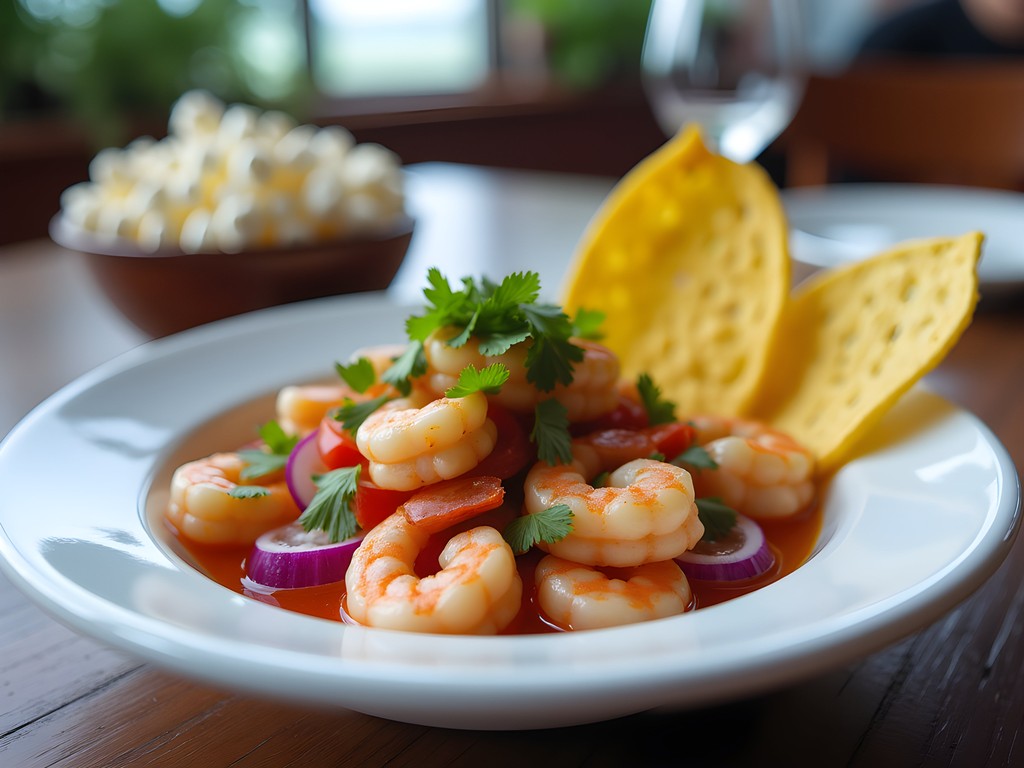
💡 Pro Tips
- Order ceviche before 2 PM when ingredients are freshest
- Look for places where locals are eating—price doesn't always correlate with quality
- If you're sensitive to spice, request 'sin ají' (without chili)
Beyond Ceviche: Portoviejo's Hidden Culinary Gems
While ceviche may be the region's flagship offering, limiting oneself to this single dish would be like investing in only one stock—unnecessarily restrictive and missing opportunities for discovery. Portoviejo's culinary portfolio is diversified and worthy of exploration.
At the recommendation of my guesthouse owner, I ventured to Restaurante Manabita Completo, where I discovered encochado de pescado—a coconut-based fish stew that rivals any curry I've encountered in my Southeast Asian travels. The combination of fresh corvina, coconut milk, and a blend of spices unique to Ecuador's Manabí province created a dish that I returned for three times during my week-long stay. At $8 for a portion generous enough for two meals, it represents excellent value.
Another revelation came in the form of langostinos al ajillo—large prawns sautéed in garlic butter with a hint of local moonshine called puntas. I found the best version at a family-run establishment called El Navegante, where $12 secured a platter large enough to satisfy even my post-swim appetite. The proprietor, a former fisherman named Carlos, explained that the prawns are harvested from estuaries rather than the open ocean, giving them a distinctive sweetness.
Street food proved equally rewarding. Bollos de pescado—fish wrapped in banana leaves with peanut sauce and steamed—became my go-to lunch at just $2 each. The best came from a street vendor near the central park who sets up daily at 11 AM and typically sells out by 1 PM.
For those with a sweet tooth, don't miss the region's tropical fruit desserts. Particularly noteworthy is the dulce de grosellas, a sweet-tart gooseberry compote served over fresh cheese. It perfectly balances the richness of seafood meals and costs just $1-2 at most restaurants.
After long days of culinary exploration, I found myself reaching for my portable espresso maker each morning. The locally grown coffee is exceptional, and brewing it myself while planning the day's eating adventures became a cherished ritual.

💡 Pro Tips
- Ask locals about 'platos típicos Manabitas' to discover regional specialties beyond the tourist standards
- Most restaurants offer almuerzo (set lunch) specials for $3-5 that include soup, main course, and juice
- Seafood restaurants inland tend to be cheaper than those directly on the coast, often with equal quality
From Sea to Table: Fishing Village Excursions
The analyst in me has always appreciated understanding supply chains, and food is no exception. To truly comprehend Portoviejo's seafood scene, I needed to trace ingredients back to their source. This led me to Puerto López, a fishing village about 1.5 hours from Portoviejo that offers a window into the maritime economy that feeds Ecuador's coastal cuisine.
I arrived at 5:30 AM to witness the fishing boats return—colorful wooden vessels that have changed little in design over generations. The beach transforms into an impromptu market as restaurateurs and wholesale buyers negotiate directly with fishermen. There's a beautiful efficiency to the process, a natural economic system operating without corporate intervention.
For $25, I arranged an early morning fishing trip with a local captain named Vicente. We departed at 6 AM on his small boat, joining other fishermen as they cast nets for corvina and dorado. The four-hour excursion yielded modest results—two medium-sized corvina and several smaller fish—but the experience proved invaluable. Vicente demonstrated traditional fishing techniques passed down through generations, using methods calibrated to maintain sustainable populations.
The highlight came when we returned to shore and Vicente's wife prepared our catch as part of a beach-side lunch. The corvina, grilled simply with lime, salt, and local herbs, tasted entirely different from restaurant versions—sweeter, more delicate, with the unmistakable freshness that only comes from sea-to-table dining within hours.
In the smaller village of Machalilla, I discovered a community-based tourism initiative where local families offer cooking classes using the morning's catch. For $15, I spent three hours with the Anchundia family learning to prepare traditional dishes including pescado encocado and ceviche de pulpo (octopus ceviche). The experience deepened my appreciation for the labor and skill behind these seemingly simple dishes.
During these coastal explorations, my waterproof binoculars proved invaluable for spotting marine life from shore and observing fishing techniques from a distance. The clarity and magnification allowed me to appreciate details of the coastal ecosystem that feeds this vibrant culinary tradition.

💡 Pro Tips
- Arrange fishing village visits through local guides rather than tour companies for more authentic experiences
- Bring cash for direct purchases from fishermen if you have cooking facilities
- Most fishing villages welcome visitors but photography should be approached respectfully—ask permission before taking photos of people or their boats
The Budget Navigator's Guide to Portoviejo Dining
Old habits die hard. Despite leaving my budget analyst career behind, I still maintain detailed expense records when traveling. This practice has proven particularly useful in Portoviejo, where price rarely correlates with quality and some of the best meals hide in unexpected places.
My week in the region averaged $25-30 daily for food—quite reasonable for three meals plus snacks, often including seafood at every turn. The key to maximizing value lies in understanding local dining patterns and price structures.
Almuerzos (set lunches) offer the best value proposition in the Ecuadorian culinary ecosystem. Typically served between 12-3 PM, these multi-course meals include soup, a main dish (often with seafood options), juice, and sometimes dessert for $3-5. Restaurant Mar Azul, six blocks from the city center, serves an outstanding almuerzo for $3.50 that includes seafood soup, a choice of fish preparations, rice, plantains, and fresh juice. The portions are generous enough that I often skipped dinner on almuerzo days.
Breakfasts present another opportunity for value. Most cafes offer bolones—mashed plantain balls filled with cheese or chicharrón—for about $1.50. Add a fresh fruit juice ($1) and coffee ($0.75), and you've secured a filling breakfast for under $4. Café Manabí near the central park became my morning ritual, with their cheese bolones achieving the perfect balance of crispy exterior and soft interior.
For dinner, I discovered that seafood prices drop significantly just after sunset at many establishments. What appears to be happy hour discounts are actually restaurants selling off fresh catch that won't keep until tomorrow. El Cangrejo Azul reduces ceviche prices by 30% after 7 PM, and their quality remains exceptional.
Street food represents both value and authenticity. The corridor near the bus terminal features vendors selling corviche (fish and peanut fritters) for $1, empanadas de verde (plantain empanadas with seafood filling) for $1.50, and fresh coconuts for $1—perfect for assembling an inexpensive meal while people-watching.
For those planning multiple days of culinary exploration, I found my insulated water bottle indispensable. Staying hydrated in Ecuador's coastal heat is essential, and having cold water readily available saved me approximately $2-3 daily on bottled water purchases—funds better directed toward culinary adventures.
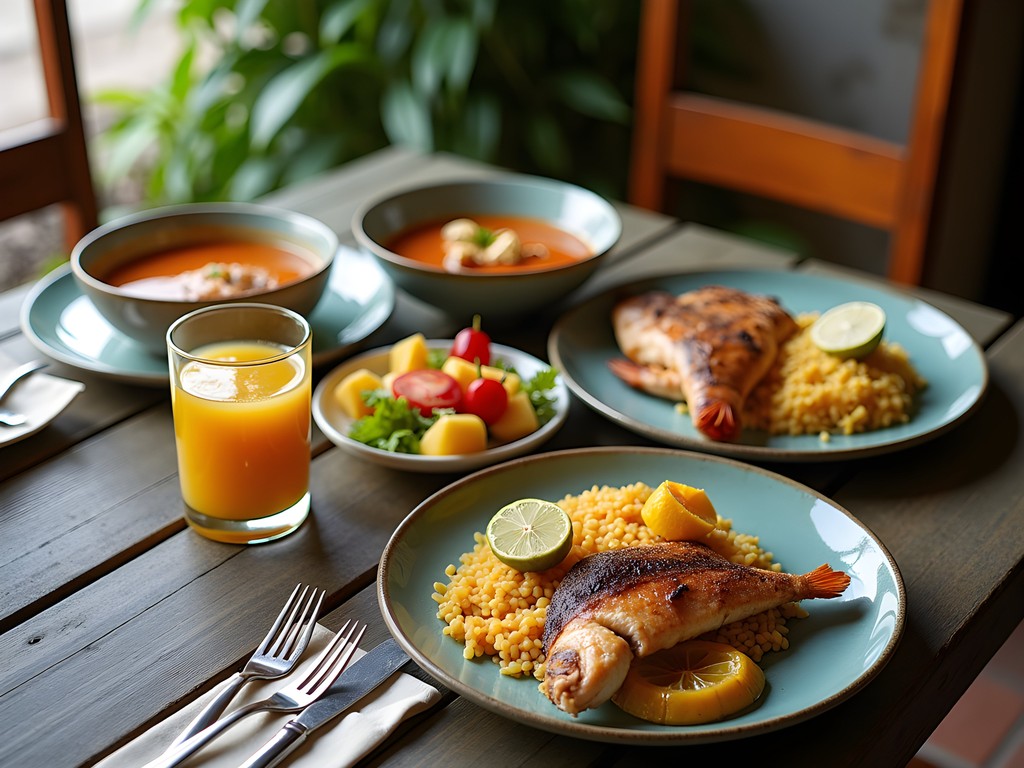
💡 Pro Tips
- Ask about 'menu ejecutivo' or 'almuerzo del día' for the best value sit-down meals
- Many seafood restaurants offer discounts after 7 PM to sell the day's remaining catch
- Street food is generally safe and represents some of the best values—look for busy stalls with high turnover
Conservation and Sustainability: The Future of Ecuador's Seafood
My passion for marine conservation inevitably colors how I approach seafood consumption. Throughout my Portoviejo culinary journey, I found myself investigating not just flavors but also sustainability practices—a natural extension of the analytical mindset that defined my former career.
The news is mixed. On one hand, many small-scale fishermen employ traditional methods that have minimal environmental impact. The hand-line fishing I witnessed in Puerto López selectively targets specific species without the devastating bycatch associated with industrial trawling. These practices have sustained coastal communities for generations.
On the other hand, increasing demand from tourism and export markets has placed pressure on certain species. During conversations with older fishermen, I heard consistent reports of diminishing catch sizes and having to venture further offshore. Particularly concerning is the status of species like corvina (sea bass) and langostino (prawns)—staples of the local cuisine that show signs of population stress.
Some restaurants are responding proactively. Cevichería El Navegante in Portoviejo has implemented a seasonal menu that adjusts according to breeding cycles and population health. When I asked about wild shrimp in April, the owner explained they temporarily substitute farm-raised options during wild shrimp breeding seasons. This thoughtful approach deserves support.
For visitors concerned about making sustainable choices, I recommend three strategies. First, ask restaurants about their seafood sourcing—those with direct relationships to small-scale fishermen typically have more sustainable supply chains. Second, embrace diversity in your seafood choices rather than focusing on popular species. Third, respect seasonal availability rather than demanding out-of-season options.
During my coastal explorations, I frequently used my waterproof field notebook to record observations about fishing practices and species availability. This practice, developed during my marine conservation volunteer work, helps me track changes over time and make more informed choices as a consumer.

💡 Pro Tips
- Ask specifically about 'pesca artesanal' (artisanal fishing) when inquiring about seafood sourcing
- Learn which species are currently abundant by visiting the morning fish market
- Consider joining a local beach cleanup—many restaurants sponsor weekly events to protect the marine environment
Final Thoughts
As my week in Portoviejo drew to a close, I found myself charting a mental ledger of experiences—not in dollars and cents, but in flavors and connections. The region's seafood scene offers a perfect balance sheet: rich in diversity, accessible at multiple price points, and backed by centuries of cultural capital. For travelers willing to venture beyond Ecuador's more famous destinations, Portoviejo rewards with culinary dividends that far exceed expectations. Like the ocean itself, this region's cuisine runs deeper than first appearances suggest, with layers of complexity that reveal themselves to the patient explorer. Whether you're analyzing the perfect acid balance in a ceviche or calculating the value proposition of a $3.50 almuerzo, Portoviejo proves that the best travel experiences—like the best retirement decisions—combine careful assessment with bold leaps of faith. The coastal waters will continue their rhythmic dance with Ecuador's shores long after we depart, but carrying these flavors in memory feels like compound interest on life's most valuable investment: experience.
✨ Key Takeaways
- Portoviejo offers exceptional seafood value with most meals ranging $3-15 even for premium seafood
- Morning market visits provide cultural insights and the freshest ingredients
- Small fishing villages like Puerto López offer authentic sea-to-table experiences worth the day trip
- Supporting restaurants with sustainable fishing practices helps preserve the region's culinary traditions
📋 Practical Information
Best Time to Visit
year-round, though December-April offers drier weather
Budget Estimate
$30-50 per day for food and local transportation
Recommended Duration
4-7 days
Difficulty Level
Beginner
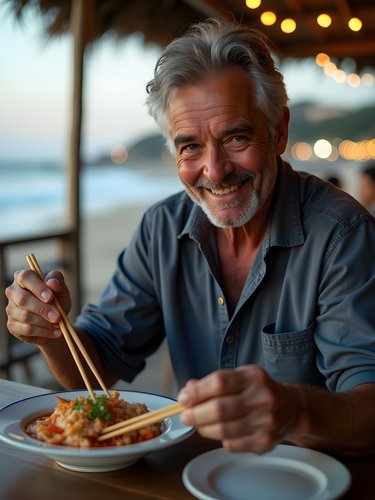
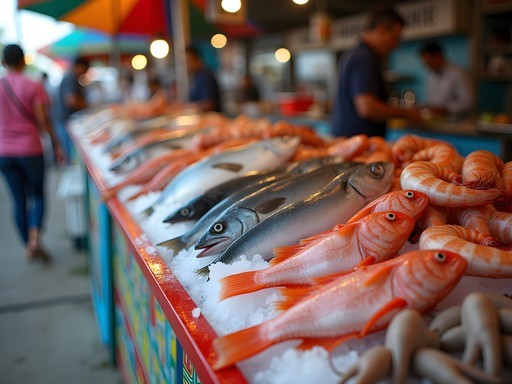

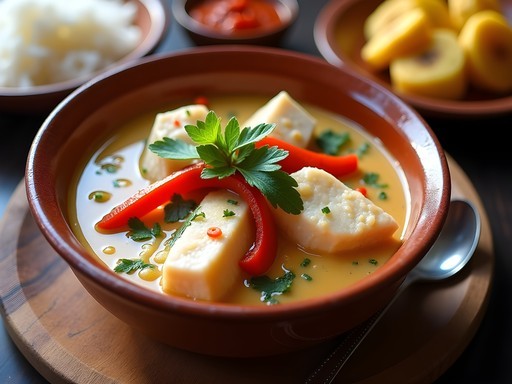
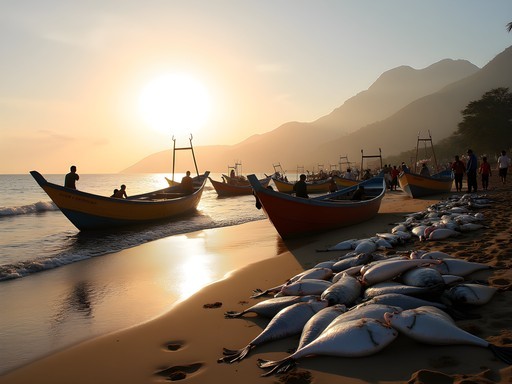
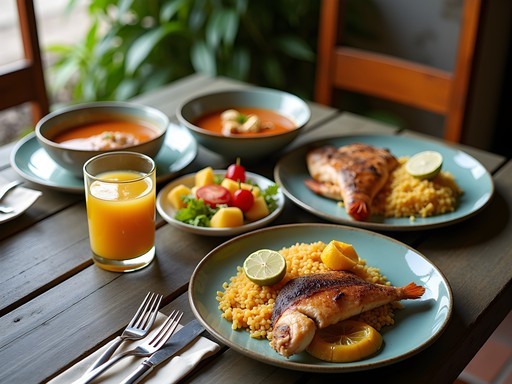







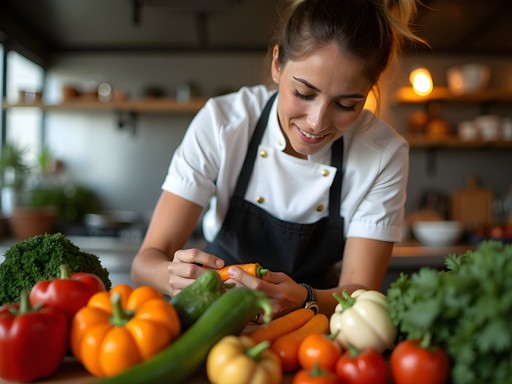
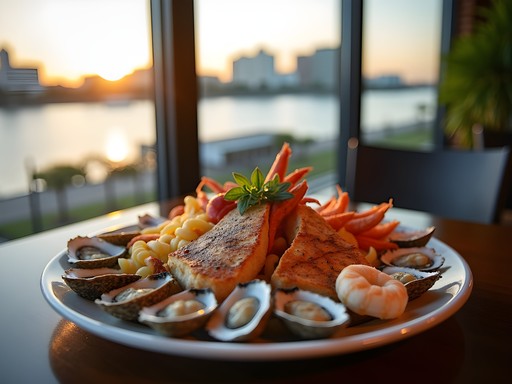
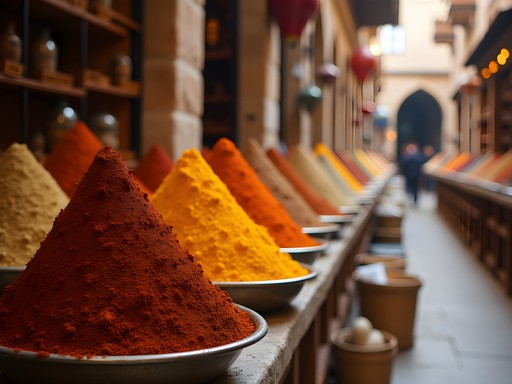
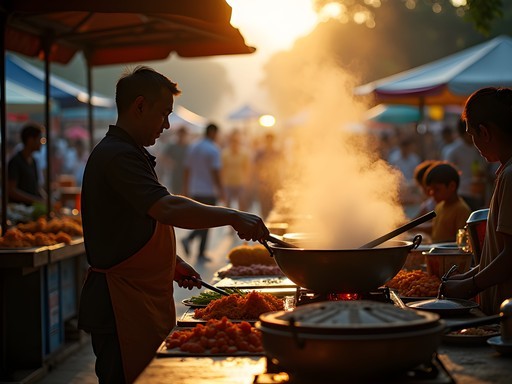
Comments
islandmood
Just booked my trip!!! So excited to try ALL the ceviche! Thanks for the inspiration!
Gregory Boyd
John's analysis of Portoviejo's culinary landscape is remarkably accurate. Having visited three times over the past decade for my research on coastal Ecuadorian cuisine, I've observed the subtle evolution of their seafood preparation techniques. The distinction between highland and coastal ceviche styles is particularly fascinating - the Portoviejo approach using the short marination preserves the textural integrity of the seafood while still achieving the acid-cooking effect. One element worth noting is the increasing integration of sustainable fishing practices among the suppliers to Mercado Municipal. Several vendors now proudly display certification indicating their commitment to responsible harvesting methods, something that wasn't present during my first visit in 2016.
sunsetace611
That market photo with all the colorful ceviche toppings is STUNNING! Makes me want to book a flight right now! Did you take that with your phone or a proper camera?
islandtime
If you're heading to Portoviejo, don't miss the corviche (fried fish and plantain dumplings). Best street food I had in Ecuador!
islandmood
Ooh that sounds amazing! I'm planning my first trip to Ecuador next month. Any other must-try dishes?
islandtime
Definitely try encocado (seafood in coconut sauce) and viche (fish soup with peanuts). The green plantain empanadas are great for breakfast too!
Hunter Thompson
Absolutely buzzing to see Portoviejo getting the love it deserves! I backpacked through Ecuador last summer and the seafood scene there completely blew my mind. John, your description of the ceviche variations is spot on - I became obsessed with the black clam (concha negra) version. Pro tip for anyone heading there: the fishing villages just outside town offer the freshest catches at half the price. I spent a day in Crucita where they literally cook whatever came in on the morning boats. Used my pocket phrasebook constantly since English was pretty limited, but the food vocabulary section was perfect for pointing out what I wanted to try!
adventurewalker
How's the English spoken there? Worried about the language barrier.
sunsetace611
Not John, but I was there in March. In tourist areas some English, but at the markets very limited. I used Google Translate a lot and pointing works wonders! The locals really appreciate any attempt at Spanish though.
adventureguy
Those ceviche photos are making me hungry! Adding Portoviejo to my bucket list!
redchamp757
John, your post took me right back to my trip to Portoviejo last year! That ceviche from Mercado Municipal was life-changing - the perfect balance of lime and heat. Did you try the encebollado at that little stand near the northeast corner? The old lady who runs it has been making it for 40+ years and claims her secret is the yuca she adds. I still dream about it.
John Hart
I did! Maria's stand, right? She told me her grandmother taught her the recipe. That broth was incredible - I actually went back twice!
redchamp757
That's the one! So glad you found it. Her son mentioned they might open a proper restaurant next year.
adventuretime
How spicy is the food there generally? I'm a total wimp with heat but I really want to try everything!
islandqueen
You'll be fine! Ecuadorian coastal food isn't super spicy. They usually serve ají (hot sauce) on the side so you can control the heat level.
adventuretime
Perfect, thanks! Can't wait to try that ceviche!
islandqueen
Just got back from Portoviejo last week and can confirm everything in this post! We tried that encebollado fish stew John mentioned and it was incredible for hangovers lol. One place he didn't mention that's worth checking out is Restaurante El Navegante - it's a bit off the tourist path but their langostinos in coconut sauce are out of this world. I used my phrasebook constantly since English wasn't widely spoken, but everyone was super patient with my terrible Spanish.
Venture X
Premium card with 2X miles, $300 travel credit, Priority Pass